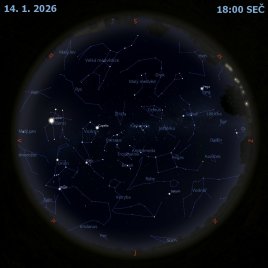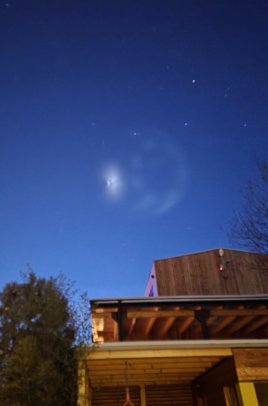STARFORGE: Simulace vzniku hvězd
Uznání videa:
Michael Y. Grudić (Northwestern U.) et al., STARFORGE Collaboration;
Music:
Prelude, Op. 28, No. 4
in E Minor
(Frédéric Chopin)
Jak vznikají hvězdy? Většina hvězd vzniká v obřích molekulárních mračnech v centrálním disku galaxie. Proces je zahájen, ovlivňován a vymezen hvězdnými větry, výtrysky, vysokoenergetickým hvězdným světlem a výbuchy supernov už dříve existujících hvězd. Video ukazuje tyto komplexní interakce jak je spočítala simulace STARFORGE v plynovém mračnu 20 000 krát hmotnějším, než naše Slunce. Na časosběrné vizualizaci světlejší oblasti označují hustší plyn, barva znamená rychlost plynu (fialový je pomalejší než rychlejší oranžový) a tečky znamenají polohy nově vzniklých hvzěd. Na začátku videa začíná vlastní gravitací kondenzovat asi 50 světelných roků velké plynové mračno. Do 2 milionů let vznikají první hvězdy a u nových hmotných hvězd jsou vidět působivé výtrysky. Po 4,3 milionech let je simulace zastavena a poté se celý objem se otáčí, aby se získala třírozměrná perspektiva. O vzniku hvězd toho ještě mnoho nevíme, včetně vlivu výtrysků na zmenšení hmotnosti následně vzniklých hvězd.
Seznam odkazů v popisu
- APOD: 2021-05-02 Mračna v Mlhovině v Lodním kýlu
- AstroBites.org: The Whirlpool Galaxy Like You’ve Never Seen it Before
- SWIN.edu.au: Stellar Winds
- SWIN.edu.au: Stellar Jets
- Wikipedia: Ionizing_radiation
- APOD: 2021-01-18 Zbytek supernovy mlhovina Prodloužená mícha
- Youtu.be: STARFORGE: The Anvil of Creation
- Starforge.space: Star Formation in Gaseous Environments
- NASA: Sun - Our Star
- Starforge.space: Movies
- NASA: Stars
- Youtu.be: STARFORGE: A Star Formation Simulation
- NASA: What Is a Light-Year?
- HuffingtonPost.com: Foto: překvapená kočička :-)
- APOD: 2021-06-22 HD 163296: Výtrysky ze vznikající hvězdy
- APOD: 2018-12-18 Bubliny metanu zamrzlé v jezeru Bajkal
- Youtu.be: Illustris Simulation of the Universe (w/ music)
- Wikipedia: Star_formation
- arXiv.org: STARFORGE: The effects of protostellar outflows on the IMF
NASA Official: Phillip Newman Specific rights apply. NASA Web Privacy Policy and Important Notices
A service of: ASD at NASA / GSFC & Michigan Tech. U.
Odkaz na originální APOD


